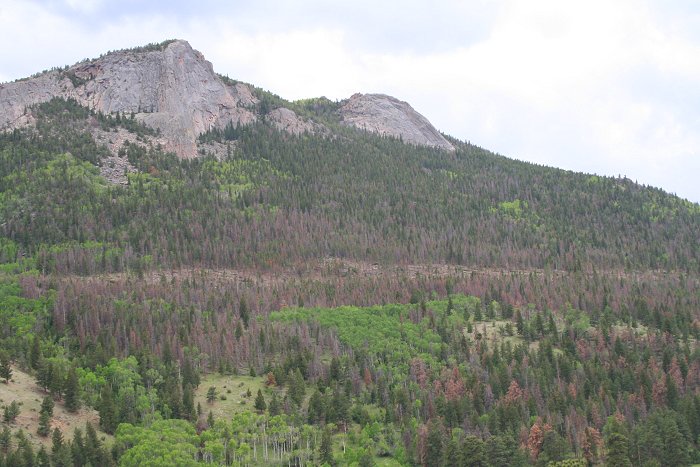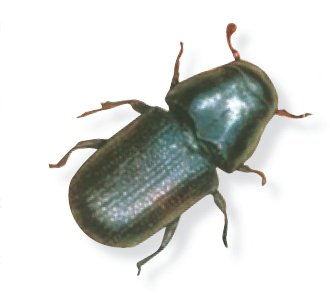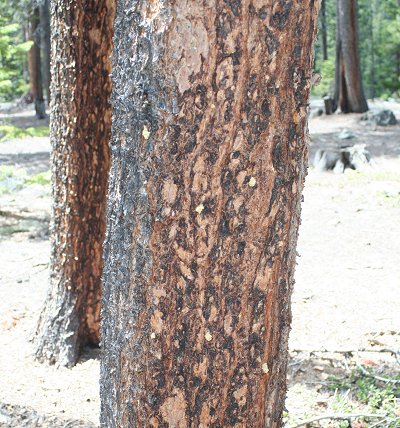How Does Verbenone Work?


Large areas of beetle kill in Rocky Mountain National Park

While Bark Beetles have been around for millennia, and while they have been known to cycle through the forest periodically, there are factors at play that have not previously been so prevalent. Because forest temperatures are warming, the beetles are not being frozen out during the coldest part of the winter. Warming temperatures also bring draught. Draught is weakening trees, which then become more susceptible to beetle-born disease. For these reasons, there seems no end in sight until the trees are gone unless we protect the forests.
Beetles and other insects communicate using pheromones (fragrances). Verbenone (whether pouch or paste) is a synthetic fragrance that replicates the beetle pheromone, sending a message to arriving swarms that the tree is full and that the food supply is insufficient for additional beetles. Arriving beetles receive the "message" that they should look elsewhere for a suitable host.
Easy-to-use, controlled-release dispensers or paste are applied to individual trees. The tagged tree has a halo of fragrance surrounding it, and prevailing breezes carry the "plume" of pheromone in the direction of the surrounding trees within 25 ft. that you want protected .
Because beetles are not strong flyers, their next tree host must be within a short distance. If that home is "full", they must continue traveling until they reach a good tree. By forcing them to fly further and further, they succumb to exhaustion or simply can't find a suitable host and land in an inhospitable place where they die.
The tree pictured here has been successfully attacked by beetles. The white pitch wads are the tree's way of trying to trap and kill the beetles. If the tree is full of water (not draught-weakened), it is sometimes successful and preventing the beetles from penetrating. However, a tree so heavily attacked is a potential mother-load of beetles that will hatch and spread the contagion next year. It must be cut and burned.

Verbenone helps control:
And can be used on:
Verbenone has been used as part of integrated pest management programs (IPM) for more than a decade. Many studies show that areas treated with Verbenone, as part of an IPM program, fare significantly better than those that are not. It is commercially used by the Forest Service, National Parks, State Agencies, Recreation Areas, Home Owner's Associations in high value recreational or private land holdings, and professional tree service companies. Read last year's reviews.
Verbenone Pouch is considered a "soft" pest control product and can be used in environmentally sensitive habitats. It is environmentally safe and non-toxic to humans, pets, birds, and even the beetles themselves. Registered by EPA and most Rocky Mountain States. All pheromones in controlled release dispensers are approved organic by USDA/NOP. It is user and Eco-Friendly. Unlike the insecticides approved for Mt. Pine Beetle control,Verbenone does not kill bees, beneficial insects, aquatic organisms. The EPA classifies it as CAUTION, which is indicative of needing the lowest level of concern in regards to insecticides. Not restricted use. (Always follow label instructions.)
© Dataweb, Inc
Telephone: 1-512-282-3003 Fax 1-512-292-7957
521 Grande St, Driftwood, Texas 78619
© Copyright 1996- by Dataweb, Inc. All Rights Reserved.